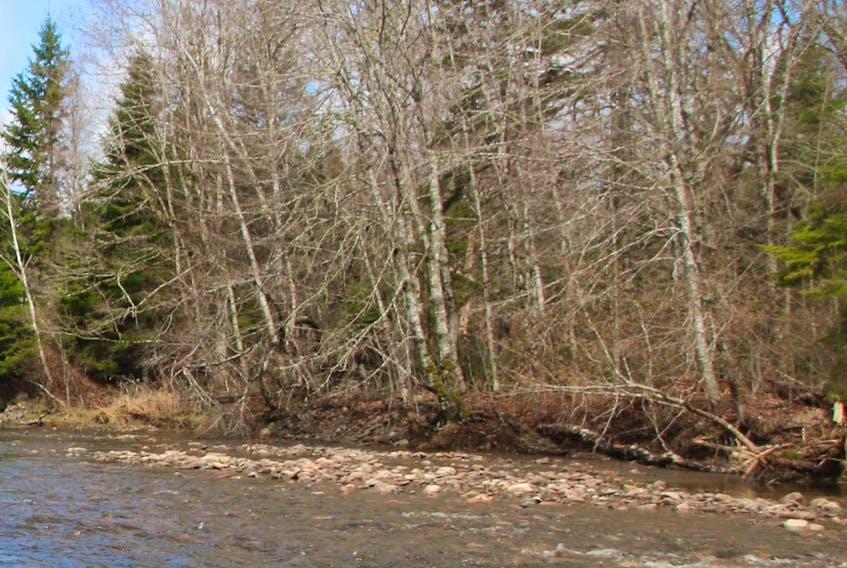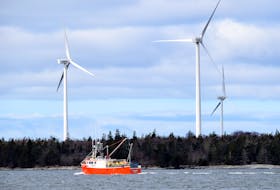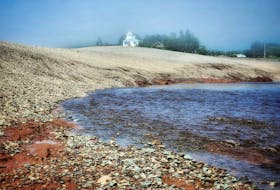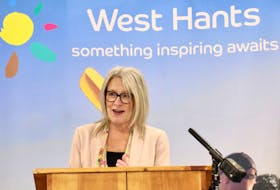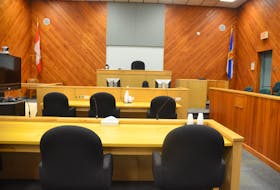A parcel of land in southwestern Colchester County is a wilderness protection area in waiting.
But it will not be afforded protection from a planned natural gas pipeline.
“The province is just going to let them build a pipeline through it without fully understanding the value of the place they are going to destroy,” Robin Tress of the Council of Canadians said of the province’s approval of a 10.8-kilometre Alton Gas connector pipeline.
The pipeline would connect the underground gas storage caverns to be flushed out along Brentwood Road near Stewiacke to the Maritimes & Northeast transmission pipeline. The parcel of land that it would traverse lies along the Stewiacke River, 500 hectares of unsullied woodland and wetland that is home to an old-growth hemlock forest, the Canadian warbler — an endangered songbird — and several at-risk plant species.
An Environment Department spokeswoman said the plan to designate the Stewiacke River Wilderness region as a protected area is part of government’s goal to protect more than 12 per cent of the province’s land mass.
“This area has not been legally protected, but
is being evaluated alongside other potential protected areas,” Chrissy Matheson said in an email.
“Advancing land protection is a priority for government. While we do not have any definitive timelines for when a protection decision may be made, staff are actively engaged in this work.”
Meanwhile, Lori MacLean, spokeswoman for Alton Natural Gas Storage LP, said the company has been doing some general planning for the pipeline
construction, including field work last year.
“There’s more work to come with respect to the pipeline,” MacLean said in an email.
“Our recent efforts have been more focused on the river site and brining.”
The planned project, financed by parent company AltaGas, would flush out two giant gas storage caverns from the underground salt beds at a site about 14 kilometres northeast of the Highway 102 exit at Stewiacke.
Nearly 10,000 cubic metres of water would be drawn daily from the Shubenacadie River system and piped 12 kilometres to the wellbores at Brentwood Road. The brine that is created will be pumped back to the estuary near Fort Ellis for release into the river system, a gradual discharge of 1.3 million cubic metres of salt over a two- to three-year period.
Despite being beset by protests and a legal challenge by the Mi’kmaq community, the project has received approval from the Environment Department.
In May 2013, the department approved a connector pipeline route that would bisect the proposed wilderness protection area.
The original approval was for work to be done in a two-year period but it was extended in 2015.
The approval came with several terms and conditions. The conditions include the development and implementation of a compensation plan to be approved by the Environment Department to cover impacts on the wilderness area.
The plan would include securing additional conservation land for the province in the vicinity of the pipeline.
The pipeline cannot cross watercourses or alter wetlands without approval from the department.
The terms and conditions of the approval irk Tress.
“One of the conditions of approval is that they(Alton) compensate for impacts on the wilderness area, which is basically
an acceptance that the wilderness area will be impacted for the sake of the profit of a private company with no benefit to the people most impacted, namely the Mi’kmaq people and the neighbours of the project,” Tress said.
Tress, who has twice taken part in bio-blitzes of portions of the proposed protected lands near the Stewiacke River that have been red-flagged for the connector pipeline, said the value of the wetlands and the forest has not been captured in environmental assessment data.
“The data used and written into the assessment for its approval is somewhere between five and 10 years old,” Tress said. “If Alton wants to go ahead and the province wants to allow it, they should redo the data. That data is out of date.
“The people of Nova Scotia asked for this land to be protected. The government included it in a plan of potential protected areas which shows that the government understands that it has some ecological value that is worth protecting. Once again, the government of Nova Scotia is willing to put the needs and requests of private companies above the needs of the people of Nova Scotia.”
The Stewiacke River Wilderness area is comprised of land that the government acquired in 2010 for the purpose of conservation from Neenah Paper, the previous owner of the Abercrombie Point pulp mill in Pictou County.
The 10-metre-wide swath of land to be cleared for the pipeline will take the connector line through the Stewiacke River.
“It’s anticipated there will be watercourse crossings for the pipeline,” MacLean said. “Our goal is to minimize any impact on the environment, including wetlands and watercourses. We’ll follow watercourse crossing direction from Nova Scotia Environment and will follow best construction practices.”
MacLean said it is important to note that there will be no spills from the connector pipeline.
“The natural gas in the pipeline does not spill.”
Both Matheson and MacLean said compensation is still to be worked out for treading on land proposed for protection.
“The compensation plan hasn’t been developedyet, but it is a condition of the pipeline approval and will be addressed at the appropriate time,” MacLean said.
Tress harkened back to the auditor general’s stinging report from earlier this month that criticized the Environment Department for not monitoring or following up on almost half of theterms and conditions it placed on project approvals.
“Government should be following its own rules,” Tress said. “This is an example of how they have failed. None of the conditions of this project have been met. Four years have passed. The company in that time has had multiple failures with this project and the government is going to let them go ahead and plow over old-growth forest and endangered species habitat so they can provide storage for natural gas for a profit.”
Tress said the company has continually cut corners to curb expense, including promoting a connector pipeline route that is more intrusive than alternate routes.
“The company has done nothing to show that they are going to meet any of these requirements,” she said.
“On the other side of the project, they cancelled two of the four caverns that they (applied) to build with no explanation to the public that was of any value. At their river site, the mixing channel is full of mud, 15 feet of mud. They have closed their office, they don’t have office space anywhere in Nova Scotia and they have basically fallen off the map. Is the government going to just let them continue to hobble along, threatening the river and the people of Sipekne’katik, or are they going to pull the plug?”
-Francis Campbell

